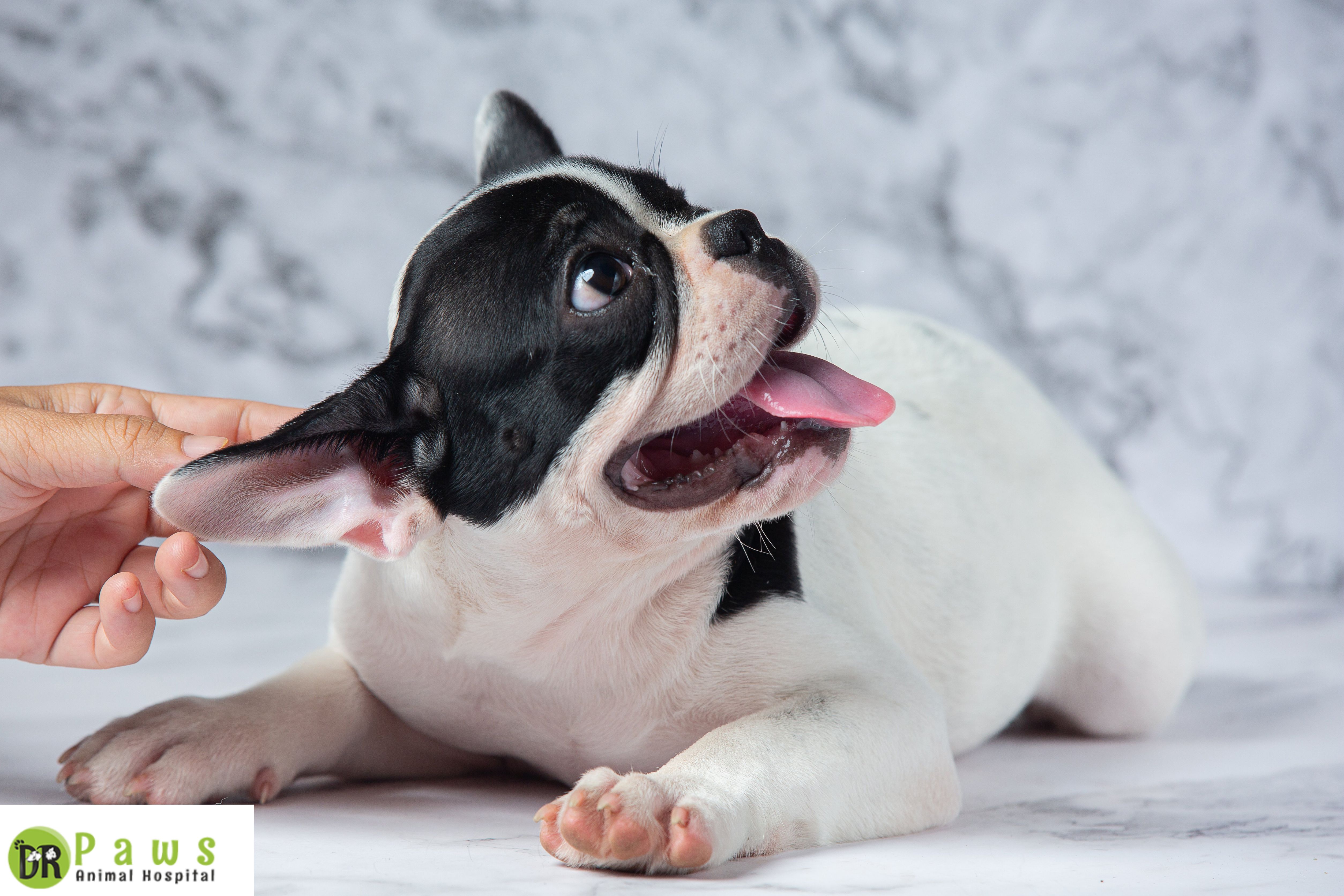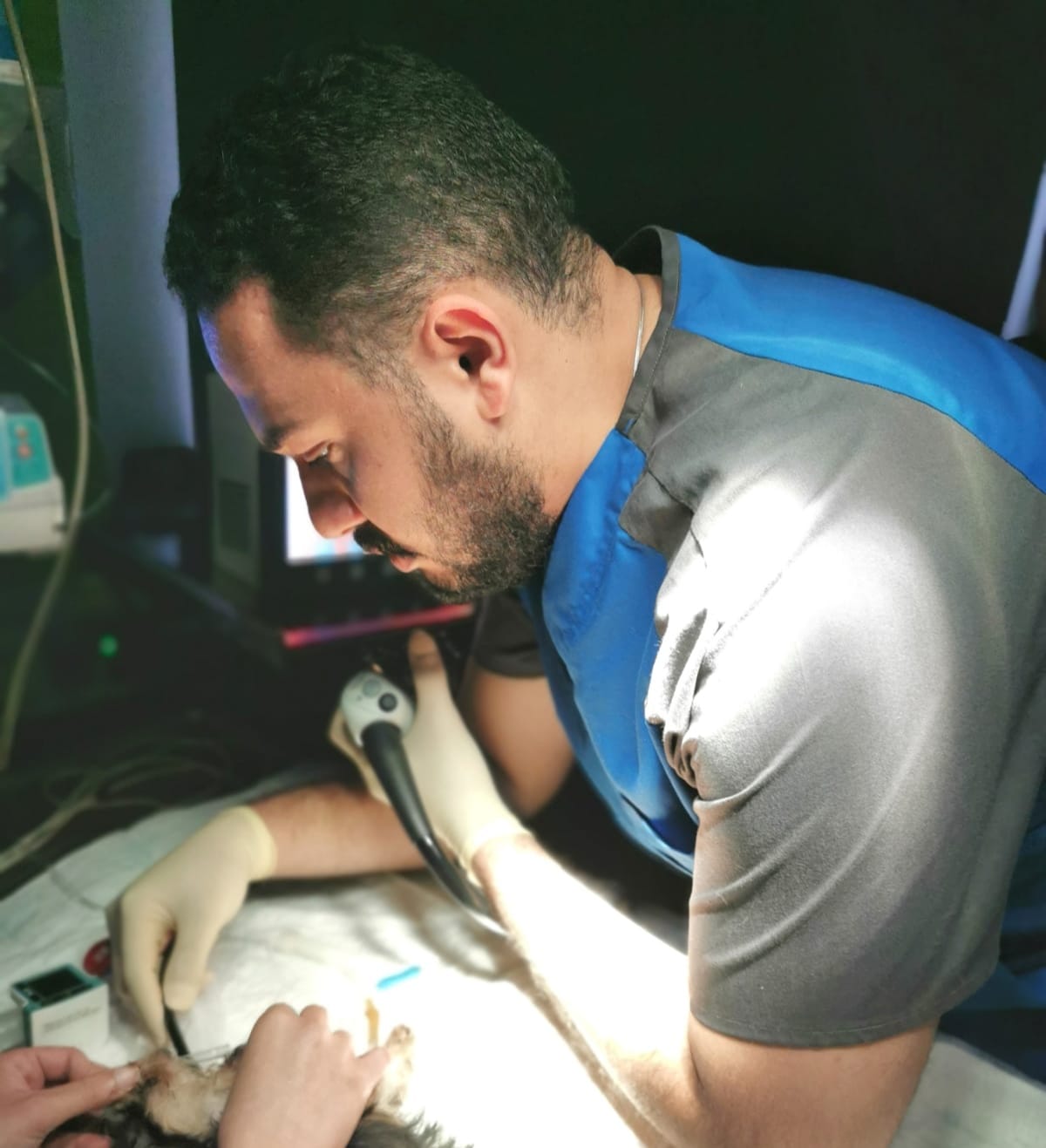
Exploring the GIT in taking biopsies from the stomach and duodenum
Patient preparation:
withdrawal of food for at least 12 hours before
the procedure so that the stomach is empty. Water does not need to be withheld
before the procedure. Endoscopy too soon after a meal should be avoided
because:
• Visualization is difficult; lesions and
foreign bodies may be missed
• Pyloric intubation is difficult or impossible
• The endoscope may become clogged
• There is a danger of aspiration during
recovery
It is preferable to hospitalize the patient
overnight before gastroscopy; this allows time for preliminary investigations
and ensures that the patient does not eat before the procedure.
Premedication: should be used to smooth induction and recovery
Diazepam & ketamine
recent pilot study showed that the combination
of butorphanol and dexmedetomidine made pyloric intubation faster than in
patients premedicated with methadone and dexmedetomidine. Acepromazine maleate
with buprenorphine is another suitable combination for dogs. In cats, ketamine
or midazolam may be preferred
Antifoaming agents: A
mixture of one part acetylcysteine to five parts simethicone is given orally at
least 30 minutes before induction, Alternatively, simethicone can be added to
the bottle supplying the water for irrigation during endoscopy.
Anesthesia:
GA and intubation with an endotracheal tube tied
securely in place is mandatory.
passage of the endoscope into the pharynx may be
easier when the tube is tied to the mandible. Passing the tie around the back of the
head is less secure, as the repeated movements of the endoscope tend to
dislodge the endotracheal tube, but is a necessity in cats and brachycephalic
dogs.
‘An elbow connector may be used to keep the
anaesthetic circuit away from the insertion tube of the endoscope.
In dogs, a cuffed endotracheal tube is preferred,
In cats, a non-cuffed endotracheal tube.
the assistant monitoring the anaesthetic should be
alert to overinflation of the stomach, as it may cause cardiorespiratory
compromise through compression of the diaphragm and caudal vena cava.
Patient positioning: left lateral recumbency
A mouth gag (speculum) must always be inserted to
prevent damage to the endoscope, but this should be
done with care in cats as excessive opening of the jaw can occlude blood flow
to the brain, with deleterious neurological consequences.
Lumen examination, exploration and
biopsy taking.
At least two biopsy samples should be collected from
the fundus, four from the body (lesser and greater curvature) and two from the
antral canal.
will be easier to biopsy if the stomach is deflated.
Overinflation of the stomach stretches the mucosa, meaning that smaller amounts
of tissue will be sampled
Recovery:
Recovery tends to be smoother if the stomach is
deflated before the gastroscope is removed.
The esophagus lavaged., Leaving gastric acid, bile and digestive enzymes in the oesophagus of a patient recovering from anaesthesia (and therefore having a depressed swallowing reflex) can predispose to inhalation pneumonia, oesophagitis and even esophageal stricture formation.
Endoskopie: Untersuchung des Magen-Darm-Trakts durch Entnahme von Biopsien aus dem Magen und Zwölffingerdarm.
Nahrungsverzicht für mindestens 12 Stunden vor dem Eingriff, damit der Magen leer ist.
Es ist vorzuziehen, den Patienten vor der Gastroskopie über Nacht im Krankenhaus zu behalten; so bleibt Zeit für Voruntersuchungen und es wird sichergestellt, dass der Patient vor dem Eingriff nichts isst.
Prämedikation:
Diazepam und Ketamin
Anästhesie:
Allgemeinanästhesie und Intubation mit einem fest verschlossenen Endotrachealtubus sind obligatorisch.
Der Assistent, der die Narkose überwacht, sollte auf eine Überblähung des Magens achten, da dies durch Kompression des Zwerchfells und der kaudalen Hohlvene zu einer kardiorespiratorischen Beeinträchtigung führen kann.
Lagerung des Patienten:
Linksseitige Rückenlage
Untersuchung des Lumens, Exploration und Biopsieentnahme.
Es sollten mindestens zwei Biopsieproben aus dem Fundus, vier aus dem Körper (kleinere und größere Krümmung) und zwei aus dem Antrumkanal entnommen werden.
Die Biopsie wird einfacher sein, wenn der Magen entleert ist. Wenn der Magen zu stark aufgebläht ist, wird die Schleimhaut gedehnt, so dass weniger Gewebe entnommen wird.
Erholung:
Der Ösophagus eines Patienten, der sich von einer Narkose erholt (und daher einen unterdrückten Schluckreflex hat), kann eine Inhalationspneumonie, eine Ösophagitis und sogar die Bildung einer Ösophagusstriktur begünstigen.
Histopathologie: Infiltration mit Entzündungszellen und Zottenatrophie, erhöhte Granularität, erhöhte Brüchigkeit.

16 Sep 2024

12 Sep 2024

01 Sep 2024

30 Aug 2024

31 Jul 2024